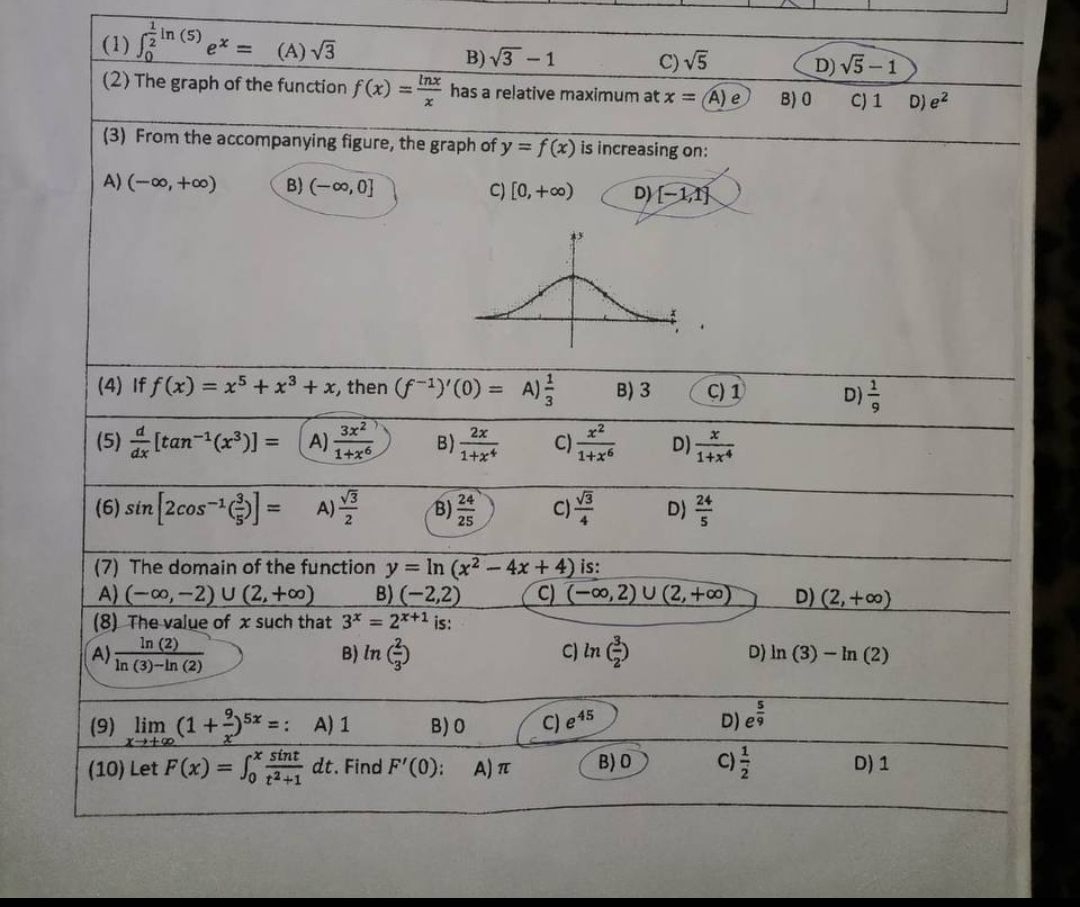Home /
Expert Answers /
Calculus /
1-int-0-1-2-ln-5-e-x-a-sqrt-3-b-sqrt-3-1-c-sqrt-5-d-sqrt-5-1-2-the-graph-of-the-pa303
(Solved): (1) \int_0^((1)/(2)ln(5)) e^(x)= (A) \sqrt(3) B\sqrt(3)-1 C\sqrt(5) D\sqrt(5)-1 (2) The graph of the ...
(1) \int_0^((1)/(2)ln(5)) e^(x)=
(A) \sqrt(3)
B\sqrt(3)-1
C\sqrt(5)
D\sqrt(5)-1
(2) The graph of the function f(x)=(lnx)/(x) has a relative maximum at x=
(A) e
Be^(2)
(3) From the accompanying figure, the graph of y=f(x) is increasing on:
A(-\infty ,+\infty )
B(-\infty ,0]
C[0,+\infty )
D-1,1
(4) If f(x)=x^(5)+x^(3)+x, then (f^(-1))^(')(0)= A(1)/(3)
B(1)/(9)
(5) (d)/(dx)[tan^(-1)(x^(3))]=
A(3x^(2))/(1+x^(6))
B(2x)/(1+x^(4))
C(x^(2))/(1+x^(6))
D(x)/(1+x^(4))
(6) sin[2cos^(-1)((3)/(5))]=
A(\sqrt(3))/(2)
B(24)/(25)
C(\sqrt(3))/(4)
D(24)/(5)
(7) The domain of the function y=ln(x^(2)-4x+4) is:
A(-\infty ,-2)\cup (2,+\infty )
B(-2,2)
C(-\infty ,2)\cup (2,+\infty )
D(2,+\infty )
(8) The value of x such that 3^(x)=2^(x+1) is:
A(ln(2))/(ln(3)-ln(2))
Bln((2)/(3))
Cln((3)/(2))
Dln(3)-ln(2)
(9) \lim_(x->+\infty )(1+(9)/(x))^(5x)=:, Ae^(45)
De^((5)/(9))
(10) Let F(x)=\int_0^x (sint)/(t^(2)+1)dt. Find F^(')(0);
A\pi
B(1)/(2)
D